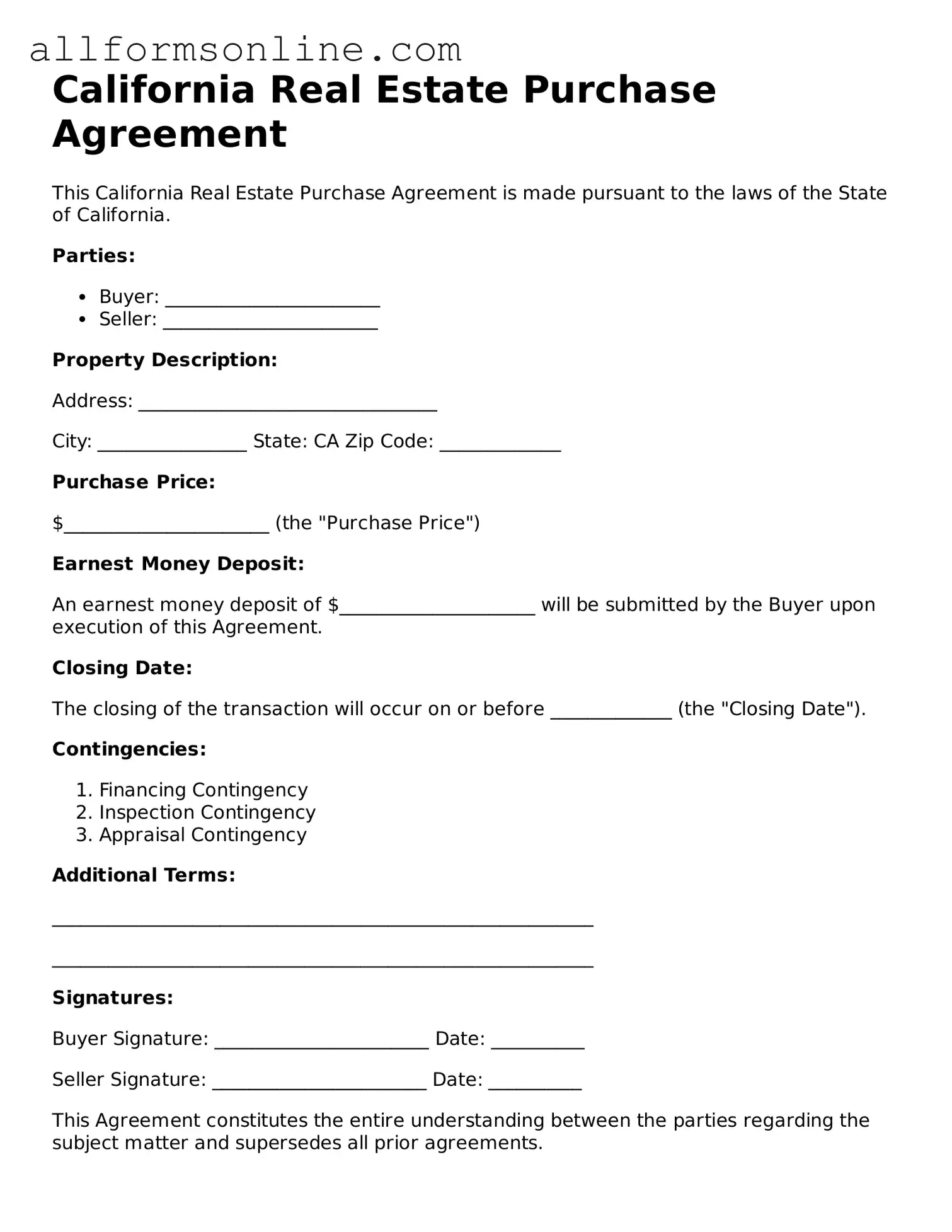What is the California Real Estate Purchase Agreement form?
The California Real Estate Purchase Agreement form is a legal document used in real estate transactions within the state. It outlines the terms and conditions under which a buyer agrees to purchase a property from a seller. This form includes essential details such as the purchase price, financing terms, and contingencies. It serves as a binding contract once both parties sign it, ensuring that all parties understand their rights and obligations throughout the transaction process.
What key elements should be included in the agreement?
Several critical components must be present in the California Real Estate Purchase Agreement. First, the property description is vital; it should clearly identify the location and boundaries of the property. Second, the purchase price must be stated along with any deposit required. Additionally, the agreement should outline any contingencies, such as financing or inspection requirements, that must be satisfied before the sale can proceed. Finally, the closing date and any included fixtures or personal property should be detailed to avoid misunderstandings.
What are contingencies, and why are they important?
Contingencies are conditions that must be met for the sale to proceed. They protect both the buyer and the seller by allowing either party to back out of the agreement without penalties if specific conditions are not satisfied. Common contingencies include financing approval, home inspections, and appraisal results. Including contingencies in the purchase agreement is crucial because they help ensure that buyers are not committed to a purchase that may not be in their best interest due to unforeseen issues.
Can the agreement be modified after it has been signed?
Yes, the California Real Estate Purchase Agreement can be modified after it has been signed, but both parties must agree to any changes. Modifications should be documented in writing and signed by both the buyer and seller to ensure clarity and legality. This process is essential for maintaining the integrity of the contract and preventing disputes. If changes are significant, it may be advisable to consult with a legal professional to ensure that all modifications comply with state laws and regulations.
